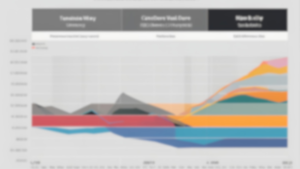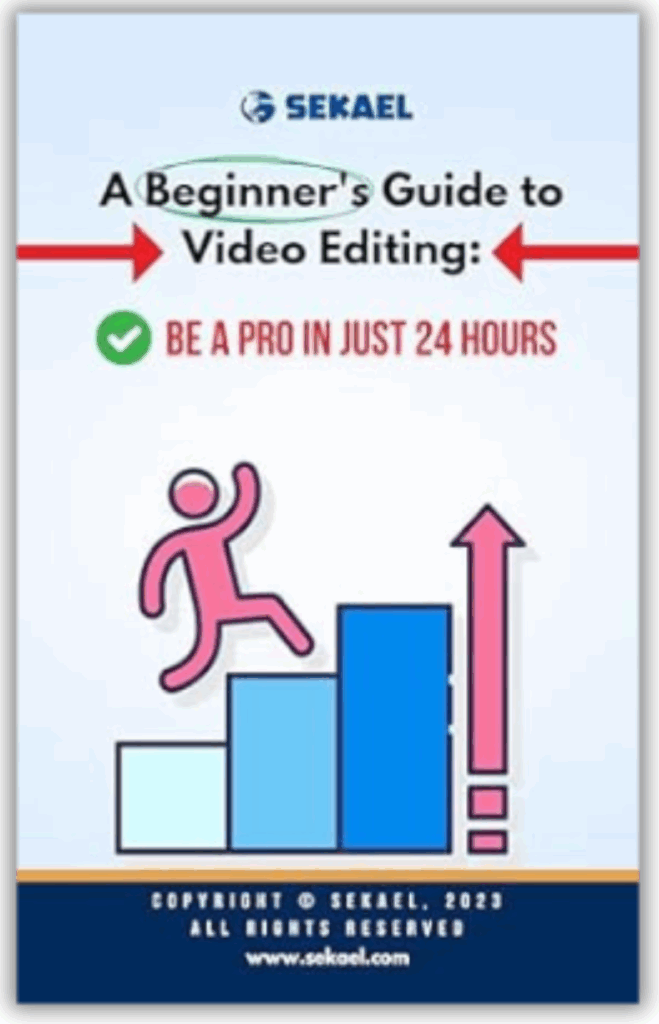
Digital Marketing Blogs
"Let's Learn, Explore, and Connect to the World"

YouTube Channel Growth Strategies: Creating Compelling Content, Collaborating with Other YouTubers, and Building a Subscriber Base
- Jenelie Hijosa
- Digital Marketing (Digital Business)

Introduction

YouTube has become a global powerhouse in the digital landscape, boasting over 2 billion logged-in monthly users and billions of hours of video consumed daily. As the second most visited website after Google, YouTube offers unparalleled opportunities for content creators to reach vast audiences, share their passions, and even generate significant income. However, amidst the immense sea of content, standing out and achieving growth requires more than just uploading videos.
Effective growth strategies are essential for any YouTube channel aiming for long-term success. Without a clear plan, even the most creative content can get lost in the algorithm, struggling to find its audience. To thrive on YouTube, creators need to focus on three key areas: creating compelling content that captures and retains viewer interest, collaborating with other YouTubers to expand reach and credibility, and building a loyal subscriber base that forms the foundation of sustained growth.
In this article, we will delve into these crucial strategies in detail. We’ll explore how to develop engaging content that resonates with viewers, the benefits and methods of collaborating with fellow creators, and the best practices for attracting and retaining subscribers. By mastering these elements, you’ll be well-equipped to navigate the competitive landscape of YouTube and achieve your growth goals.
Section 1: Creating Compelling Content
Understanding Your Niche

Importance of Selecting a Niche
Choosing a niche is crucial for building a successful YouTube channel. A niche helps define your target audience, allowing you to create content that specifically caters to their interests and needs. This focused approach not only makes your channel more attractive to viewers but also improves your chances of being recommended by YouTube’s algorithm, which favors specialized content.

Researching Popular Niches
Researching popular niches involves examining trends and topics that are currently gaining traction on YouTube. Utilize tools like Google Trends, YouTube Analytics, and keyword research platforms to identify high-demand areas. Look at what successful channels in those niches are doing, and pay attention to the types of videos that consistently receive high engagement.

Finding Your Unique Angle Within the Niche
After identifying a potential niche, the next step is to find your unique angle. This could be a fresh perspective, a personal twist, or a specialized focus that sets you apart from other creators. Your unique angle should reflect your personality, passions, and expertise, making your content both authentic and engaging. For example, if you choose the fitness niche, consider what unique value you can offer, such as workouts for specific age groups, innovative exercise routines, or a mix of fitness and lifestyle advice.
Content Planning and Consistency

Developing a Content Calendar
A content calendar is essential for maintaining a consistent upload schedule. Plan your content weeks or months in advance to ensure a steady flow of videos. This helps you stay organized and reduces the stress of last-minute content creation. A well-planned calendar also allows you to strategically schedule videos around key dates, trends, and events relevant to your niche.

Importance of Regular Uploads
Regular uploads are vital for retaining your audience and encouraging growth. Consistency builds trust with your viewers, as they come to expect and look forward to your content. It also signals to YouTube’s algorithm that your channel is active, which can boost your visibility and recommendations. Determine a realistic upload schedule that you can maintain, whether it’s once a week, bi-weekly, or even more frequently.

Balancing Quality and Quantity
While regular uploads are important, maintaining a balance between quality and quantity is crucial. High-quality content is more likely to engage viewers and encourage them to subscribe and share. Invest time in planning, scripting, and producing each video to ensure it meets a high standard. Avoid sacrificing quality for the sake of frequent uploads, as poorly produced content can hurt your channel’s reputation.
Engaging Storytelling and Production Quality

Basics of Storytelling in Videos
Engaging storytelling is at the heart of compelling content. Structure your videos with a clear beginning, middle, and end. Start with a hook to grab attention, build your narrative with interesting and relatable content, and conclude with a strong call-to-action. Use personal anecdotes, case studies, and real-life examples to make your content more relatable and memorable.

Enhancing Production Value (Lighting, Sound, Editing)
High production value enhances the viewer experience and makes your content more professional. Invest in good lighting to ensure your videos are well-lit and visually appealing. Clear, high-quality sound is equally important, as poor audio can drive viewers away. Use external microphones if necessary. Additionally, take the time to edit your videos meticulously, adding graphics, music, and transitions to keep them engaging and polished.
SEO and Keyword Optimization for Videos

Importance of SEO in YouTube
Search Engine Optimization (SEO) is critical for making your videos discoverable. YouTube’s algorithm relies heavily on keywords and metadata to recommend content. Proper SEO can significantly increase your chances of appearing in search results and suggested videos, driving more traffic to your channel.

Effective Keyword Research
Effective keyword research involves identifying terms and phrases that your target audience is likely to use when searching for content. Tools like Google Keyword Planner, TubeBuddy, and vidIQ can help you find relevant keywords with high search volume and low competition. Incorporate these keywords naturally into your video titles, descriptions, and tags.

Optimizing Titles, Descriptions, and Tags
Optimize your video titles to be clear, compelling, and keyword-rich. Your title should accurately reflect the content of your video while enticing viewers to click. In the description, provide a detailed summary of your video, including key points and keywords. This not only helps with SEO but also gives viewers context about what to expect. Tags should include a mix of broad and specific keywords related to your video. Use as many relevant tags as possible to increase your chances of being discovered through search and suggested videos.
By focusing on these elements, you can create compelling content that attracts and retains viewers, setting the foundation for sustained growth on YouTube.
Section 2: Collaborating with Other YouTubers
Benefits of Collaboration

Expanding Your Audience Reach
Collaborating with other YouTubers is a powerful way to expand your audience reach. By working with creators who have their own established viewer base, you can expose your channel to new audiences who may share an interest in your content. This cross-pollination of audiences helps both channels grow and gain new subscribers.

Building Credibility and Authority
Partnering with reputable YouTubers in your niche can significantly enhance your credibility and authority. When viewers see you working alongside respected creators, they are more likely to perceive you as a trustworthy and knowledgeable source. This can lead to increased engagement, higher retention rates, and a stronger overall brand image.

Cross-Promotion Opportunities
Collaboration provides numerous cross-promotion opportunities. By featuring each other in videos, promoting content on social media, and encouraging followers to check out your collaborator’s channel, you can drive significant traffic and boost your visibility. Cross-promotion is mutually beneficial, helping both channels attract more views and subscribers.
Finding the Right Partners

Identifying Potential Collaborators in Your Niche
Finding the right partners is crucial for a successful collaboration. Start by identifying YouTubers within your niche who have a similar audience size and engagement level. Look for creators who share your values, style, and content themes. This ensures that the collaboration feels natural and resonates with both audiences.

Assessing Compatibility and Mutual Benefits
Once you’ve identified potential collaborators, assess their compatibility and the mutual benefits of working together. Watch their videos, analyze their engagement, and read their audience’s comments to understand their community better. Consider how your collaboration can add value to both channels. It’s important to choose partners who are enthusiastic about the collaboration and share common goals for the project.
Planning and Executing Collaborations

Developing Collaborative Content Ideas
Successful collaborations require creative and engaging content ideas. Brainstorm with your potential collaborators to develop concepts that showcase both channels’ strengths. Consider doing joint challenges, interviews, tutorials, or even a mini-series. Ensure that the content aligns with both of your audiences’ interests and provides value to viewers.

Communication and Planning Tools
Effective communication is key to planning and executing a smooth collaboration. Utilize tools like Trello, Slack, or Google Workspace for organizing tasks, sharing ideas, and setting deadlines. Regular video calls or meetings can help keep both parties aligned and ensure that the collaboration progresses smoothly. Clear and open communication helps prevent misunderstandings and ensures that both parties are satisfied with the final outcome.

Ensuring Smooth Execution and Mutual Promotion
During the collaboration, it’s essential to focus on execution and mutual promotion. Coordinate the release schedule so that both channels can benefit from the simultaneous promotion. Share each other’s content on social media platforms and encourage your audience to check out the collaboration. This mutual effort maximizes the reach and impact of the project.
Post-Collaboration Strategies

Engaging with New Audience Members
After the collaboration, engage actively with new audience members. Respond to comments, acknowledge new subscribers, and make them feel welcome. This helps in converting one-time viewers into loyal followers.

Leveraging the Collaboration for Future Growth
Leverage the success of your collaboration for future growth. Analyze the performance of the collaborative videos and learn what worked well. Use this insight to plan future collaborations and refine your content strategy. Building strong relationships with other YouTubers can lead to ongoing partnerships, joint ventures, and a network of supportive creators who can help you grow your channel further.
By focusing on these strategies, you can maximize the benefits of collaborations, enhance your channel’s reach, and build a strong, engaged community.
Section 3: Building a Subscriber Base
Understanding Your Audience

Analyzing Audience Demographics and Preferences
Understanding your audience is fundamental to growing your subscriber base. Begin by analyzing your audience demographics using tools like YouTube Analytics. This data provides insights into your viewers’ age, gender, geographic location, and viewing habits. Understanding these demographics helps you tailor your content to meet the specific needs and preferences of your audience.
In addition to demographics, pay attention to viewer behavior and preferences. Which videos have the highest engagement? What topics or formats do your viewers prefer? Use this information to inform your content strategy, ensuring you create videos that resonate with your audience and keep them coming back for more.

Creating Content Tailored to Audience Interests
Once you understand your audience’s demographics and preferences, focus on creating content that aligns with their interests. Engage with your audience through comments, polls, and social media to gather feedback and ideas. Regularly updating your content based on audience feedback ensures that you remain relevant and responsive to their needs. This tailored approach not only increases viewer satisfaction but also encourages loyalty, leading to higher subscription rates and long-term growth.
Engagement and Community Building

Strategies for Increasing Viewer Engagement (Comments, Likes, Shares)
Increasing viewer engagement is key to building a robust subscriber base. Encourage your audience to like, comment, and share your videos by directly asking for their participation. Pose questions, create polls, and invite viewers to share their opinions in the comments section. Engaging with viewers’ comments by responding and acknowledging their input fosters a sense of community and makes viewers feel valued.

Building a Community Through Social Media and Other Platforms
Beyond YouTube, leverage social media and other platforms to build a community around your channel. Create dedicated social media pages on platforms like Instagram, Twitter, and Facebook where you can interact with your audience more frequently and personally. Share behind-the-scenes content, updates, and exclusive previews to keep your audience engaged and invested in your channel. Hosting live streams and Q&A sessions can also strengthen your connection with viewers, making them more likely to subscribe and stay engaged.
Effective Use of Calls-to-Action

Encouraging Subscriptions and Notifications
A well-crafted call-to-action (CTA) can significantly boost your subscription rates. Encourage viewers to subscribe and turn on notifications at strategic points in your videos, such as at the beginning, during, and at the end. Explain the benefits of subscribing, such as staying updated with your latest content and being part of your community. A direct and clear CTA increases the likelihood of viewers taking the desired action.
Crafting Compelling CTAs Within Videos

When crafting CTAs, make them compelling and relevant to the content. Instead of generic requests to subscribe, tie the CTA to the video’s topic. For example, if you’re doing a tutorial, suggest that viewers subscribe to learn more tips and tricks. Use on-screen graphics, animations, and verbal prompts to make your CTAs stand out. Additionally, create a sense of urgency by offering incentives like exclusive content or giveaways for new subscribers.
Analyzing and Adapting Strategies

Monitoring Growth Metrics and Analytics
Regularly monitoring your channel’s growth metrics and analytics is essential for adapting your strategies. Pay attention to key performance indicators such as watch time, audience retention, and subscriber growth. Use YouTube Analytics to track these metrics and identify trends or patterns in viewer behavior.
Adjusting Strategies Based on Performance Data

Based on the insights gained from analytics, adjust your content and engagement strategies to better align with your audience’s preferences. If certain types of videos perform exceptionally well, consider creating more of that content. Conversely, if some videos underperform, analyze why and make necessary adjustments. Continually refining your approach based on performance data ensures that your channel remains dynamic and responsive to your audience’s needs.
By implementing these strategies, you can effectively build and maintain a loyal subscriber base, driving sustainable growth for your YouTube channel.
Conclusion
 In summary, growing a YouTube channel requires a multifaceted approach. By creating compelling content tailored to your niche, collaborating with other YouTubers to expand your reach, and building a loyal subscriber base through engagement and strategic CTAs, you can achieve sustained success. Implementing these strategies will not only help you stand out in a crowded platform but also foster a dedicated community around your content. As YouTube continues to evolve, staying adaptable and responsive to new trends and viewer preferences will be crucial. Embrace these growth strategies, and watch your channel flourish in the ever-changing digital landscape.
In summary, growing a YouTube channel requires a multifaceted approach. By creating compelling content tailored to your niche, collaborating with other YouTubers to expand your reach, and building a loyal subscriber base through engagement and strategic CTAs, you can achieve sustained success. Implementing these strategies will not only help you stand out in a crowded platform but also foster a dedicated community around your content. As YouTube continues to evolve, staying adaptable and responsive to new trends and viewer preferences will be crucial. Embrace these growth strategies, and watch your channel flourish in the ever-changing digital landscape.
References
- Wesselby, S. (n.d.). How to write a lifestyle blog. Stuart Wesselby.com. https://stuartwesselby.com/how-to-write-a-lifestyle-blog/
- Gram Follower. (n.d.). How to build a successful Instagram brand in 30 days or less. https://gramfollower.net/how-to-build-a-successful-instagram-brand-in-30-days-or-less/
- Press Release Zen. (n.d.). How to get backlinks with slides. https://pressreleasezen.com/how-to-build-links-with-slides/
- Upstanding Hackers. (n.d.). Growth hacking YouTube: Unlocking the secrets to success. https://www.upstandinghackers.com/growth-hacking-youtube-unlocking-the-secrets-to-success/
- eTechSol. (n.d.). Search engine optimization. https://etechsol.com/search-engine-optimization/
- LibreDWG. (n.d.). Mastering the YouTube game: Proven strategies for massive subscriber growth. https://libredwg.com/mastering-the-youtube-game-proven-strategies-for-massive-subscriber-growth/
- OverPower Marketing. (n.d.). How to write YouTube titles for SEO. https://overpowermarketing.com/how-to-write-youtube-titles-for-seo/
- Novit, A. (n.d.). Unlocking visibility: Mastering YouTube SEO for your channel’s success. https://aditianovit.com/unlocking-visibility-mastering-youtube-seo-for-your-channels-success/
- SocialStar. (n.d.). How to gain followers and become a social media influencer? https://officialsocialstar.com/blogs/blog/how-to-gain-followers-and-become-a-social-media-influencer
- TechMars Solution. (n.d.). Unveiling the best way to find keywords for SEO: A comprehensive guide. https://techmarssolution.com/keyword-research-tool/best-way-to-find-keywords-for-seo/
- New Generation Development Company. (2023, May 21). Top 7 tips for YouTube SEO. NGDC. https://ngdc.com.eg/2023/05/21/top-7-tips-for-youtube-seo/
- Technogog. (n.d.). Why are your YouTube views down and how can you fix this? https://technogog.com/information/why-are-your-youtube-views-down-and-how-can-you-fix-this/
- Interesting Techie. (n.d.). YouTube marketing strategy: Drive traffic and boost engagement. https://interestingtechie.com/youtube-marketing-strategy/
- Parnell, K. (n.d.). How to create a content marketing strategy. https://keithparnell.com/create-content-marketing-strategy/
Latest Blogs

Present Simple Tense 1
English Blogs “Let’s Learn, Explore, and Connect to the World” Present Simple Tense 1 I. Introduction to the Present Simple Tense in English Mastering the

Present Simple Tense 2
English Blogs “Let’s Learn, Explore, and Connect to the World” Present Simple Tense 2 II. Understanding the Present Simple Tense Definition and Structure At its
Reading comprehension quiz
Check out our books and more!

A Beginner's Guide to Video Editing: Be a Pro in Just 24 Hours
Discover your inner editing abilities with this complete guide made for beginners to master the art of video editing smoothly. ‘A Beginner’s Guide to Video Editing: Be a Pro in Just 24 Hours’ is your way to discover the secrets of professional-grade editing within a day.
Check out our Blogs!
Read our everyday blogs and expand your knowledge about English and Video Editing here in SEKAEL.


Learn through Basic English Grammar Blogs by widening your English vocabulary and learning English Grammar.












































 Finding the right keywords is like laying the foundation for your YouTube SEO strategy. This highlights keyword research as the crucial first step for optimizing your videos. Like magic words, including the right keywords in your content unlocks greater discoverability for your videos, attracting a wider audience. This uses a metaphor to emphasize the positive impact of keywords.
Finding the right keywords is like laying the foundation for your YouTube SEO strategy. This highlights keyword research as the crucial first step for optimizing your videos. Like magic words, including the right keywords in your content unlocks greater discoverability for your videos, attracting a wider audience. This uses a metaphor to emphasize the positive impact of keywords. In the next section, we will delve into how YouTube’s algorithm works and what factors influence video ranking.
In the next section, we will delve into how YouTube’s algorithm works and what factors influence video ranking. Understanding how YouTube’s algorithm works is essential for optimizing your videos and enhancing their discoverability. The algorithm is a complex system designed to serve users the most relevant and engaging content based on various factors. Here’s a closer look at how it operates:
Understanding how YouTube’s algorithm works is essential for optimizing your videos and enhancing their discoverability. The algorithm is a complex system designed to serve users the most relevant and engaging content based on various factors. Here’s a closer look at how it operates:





 The video title is one of those first things potential viewers see. A well-crafted title can significantly improve your video’s click-through rate (CTR). Below are the tips for creative titles:
The video title is one of those first things potential viewers see. A well-crafted title can significantly improve your video’s click-through rate (CTR). Below are the tips for creative titles: Your video description provides additional context and helps the alogortihm of YouTube’s understand what your video is all about. A well-written description can also guide viewers on what to expect, potentially increasing watch time and engagement. Here’s how to optimize your descriptions:
Your video description provides additional context and helps the alogortihm of YouTube’s understand what your video is all about. A well-written description can also guide viewers on what to expect, potentially increasing watch time and engagement. Here’s how to optimize your descriptions:
 Tags are an essential component of YouTube SEO, helping the platform understand the context and content of your video. Properly utilized tags can improve your video’s searchability and ensure it reaches the right audience.
Tags are an essential component of YouTube SEO, helping the platform understand the context and content of your video. Properly utilized tags can improve your video’s searchability and ensure it reaches the right audience. Did you know that tags provide YouTube with additional information about your video, complementing your title and description. They help categorize your content and make it easier for the algorithm to recommend your video in related searches and suggested videos.
Did you know that tags provide YouTube with additional information about your video, complementing your title and description. They help categorize your content and make it easier for the algorithm to recommend your video in related searches and suggested videos. Using irrelevant tags might seem like a way to attract more viewers, but it can backfire. Misleading tags can confuse the algorithm and lead to lower rankings. Chhoose tags that are directly relevant to your video content.
Using irrelevant tags might seem like a way to attract more viewers, but it can backfire. Misleading tags can confuse the algorithm and lead to lower rankings. Chhoose tags that are directly relevant to your video content.  Thumbnails and Click-Through Rate (CTR) are crucial factors that influence a video’s performance on YouTube. An engaging thumbnail can attract more clicks, while a high CTR indicates to YouTube that your video is relevant and interesting to viewers.
Thumbnails and Click-Through Rate (CTR) are crucial factors that influence a video’s performance on YouTube. An engaging thumbnail can attract more clicks, while a high CTR indicates to YouTube that your video is relevant and interesting to viewers. Thumbnails are the first visual impression potential viewers get of your video. An effective thumbnail should:
Thumbnails are the first visual impression potential viewers get of your video. An effective thumbnail should: CTR measures how many people who click on your video in percentage after seeing its thumbnail and title. Improving your CTR can significantly boost your video’s performance. Here’s how:
CTR measures how many people who click on your video in percentage after seeing its thumbnail and title. Improving your CTR can significantly boost your video’s performance. Here’s how:





